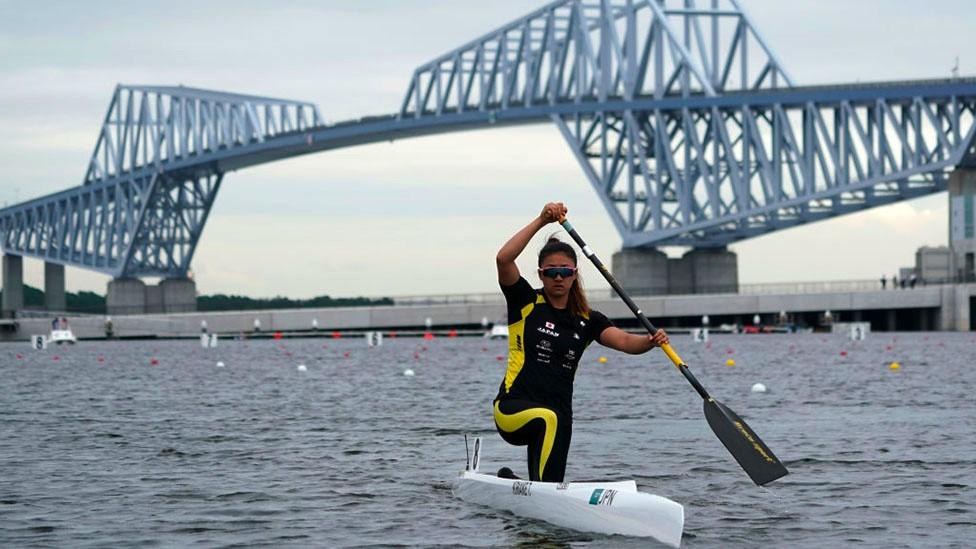Tokyo Olympics: 'Plague of oysters' threatens key venue
- Published

The Sea Forest Waterway has a weighty and expensive problem
Officials in Tokyo are nervously eyeing the waters at a major Olympic venue where an unwanted visitor has cost $1.28m (£930,000) in emergency repairs.
The Sea Forest Waterway in Tokyo Bay which will host the canoeing and rowing events was ready ahead of schedule.
But the one thing no-one counted on was oysters.
Massive numbers of them had attached themselves to floats intended to stop waves bouncing back across the water and on to the athletes.
The oysters were discovered when puzzled officials began investigating why the floats had started sinking.
Solving the problem has been a huge and time consuming task.
Equipment laid over a span of 5.6km (3.4mi) either had to be dragged ashore and repaired, or cleaned in place by teams of divers. In total, they removed 14 tonnes of oysters.
And these weren't just any shellfish. Officials found they were magaki oysters, which are a hugely popular delicacy during the winter in Japan.
However, they haven't been able to take advantage of their bumper harvest.
"We did not consider consuming them," a member of the team told the Asahi Shimbun newspaper. "That would entail safety checks."
A real shame because, although prices vary around the world, those oysters could easily be worth tens of thousands of dollars.
The Sea Forest Waterway is the only international standard rowing course in the whole country.
With a budget of only about $1.5m a year to keep it afloat after the games are over, authorities better hope they find a long-term solution to their expensive oyster problem.
My passion for Taekwondo helps my environmental work
Related topics
- Published8 July 2021

- Attribution
- Published13 July 2021
